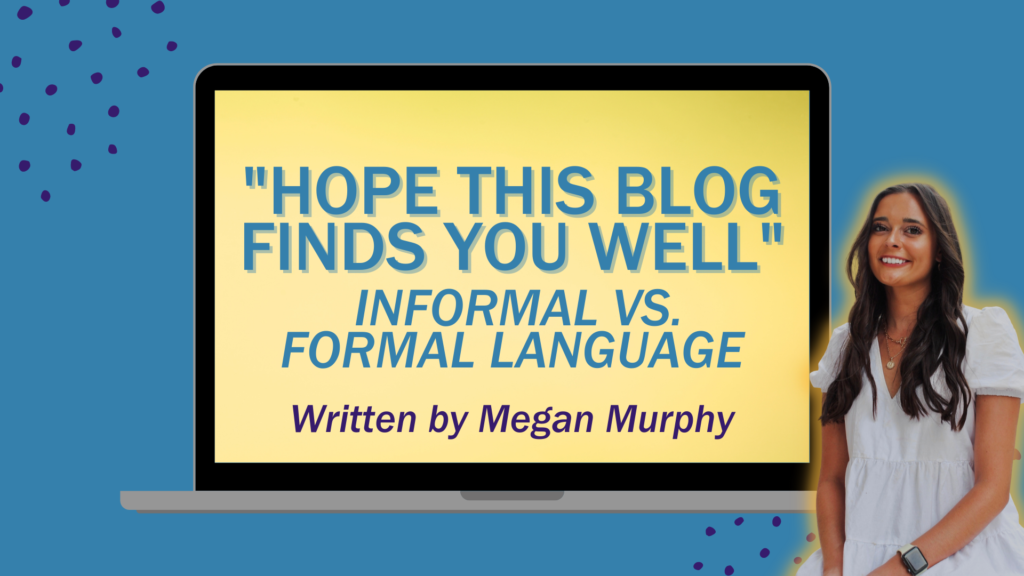“Hope This Blog Finds You Well” — Informal vs. Formal Language

As the old saying goes, the pen is mightier than the sword. When it comes to writing, the possibilities are endless. A blank piece of paper is your canvas, and the pen is your paintbrush. A true work of art will powerfully emphasize your message’s meaning and impact on the target.
However, when crafting a work of, it’s important to read the room before you write to address it. Think of the following questions when writing for public relations:
How do you know your audience?
Knowing your audience is step one in writing for a successful campaign. Public relations is all about building and maintaining relationships. When reaching out to clients and colleagues, something that is often done via email, knowing the “who” will determine the “how.” The effectiveness in communicating this message is why some relationships flourish while others may not. Depending on the audience, each relationship starts with a simple hello or a more formal greeting.
What is formal language?
Formal language is a structured way of writing, often used to show hierarchy and intelligence. Not all formal language has to be boring. You can still sound nice and add a little spice. Whether you are writing a speech, a news release or an email that’s “just reaching out,” it is imperative to select the right words before speaking or sending to curate or continue a relationship.
What is informal language?
Informal language — such as “I hope this email finds you well” — when writing professional emails is widely accepted but may seem cliché. This language is used more often when you speak than when you write. Writing with informal language is far more colloquial. If you’re reading this blog, you may have noticed my casual tone and lack of pretentious word choice.
When do you know which type to use?
Although formal language is typically more clear and reliable, it often seems less personal and can create a feeling of division between the sender and receiver. Keeping it casual has become more widely accepted in the workplace. Formal communication has started to seem old fashioned and can often slow down effective messaging in times when a plethora of information is always accessible.
To truly craft a masterpiece, you need to know when to use which language type — not only to impress your audience but also relate to them for a mutually beneficial understanding. Informal language can be effective when addressing a well-known client or when just wanting to be more personable, but like anything else, there are pitfalls when informal language is used in the wrong situation. Not only can informal language distort a message, but it can also create a misunderstanding and even contradict formal information. When used internally, however, informal communication can build trust and engagement between those at all levels in an organization.
How can your mighty pen form relationships that are built to last?
No matter what the color of the conversation is, communication is the most important factor to consider when building sustainable relationships in a professional environment. Tapping into your emotional intelligence can create a relationship that’s built to last and has a personal effect on your audience. From a blank canvas to a work of art, as long as the message is what the client needs to hear to ensure a mutual understanding, the piece will indeed find them well.

Megan Murphy is a Chicago native and an ambitious honors student at the University of Alabama. She is currently preparing for her post-graduation success that will ensue in May of 2022. Aside from her deep interest and involvement with public relations, she is also fluent in Greek and passionate about music.
